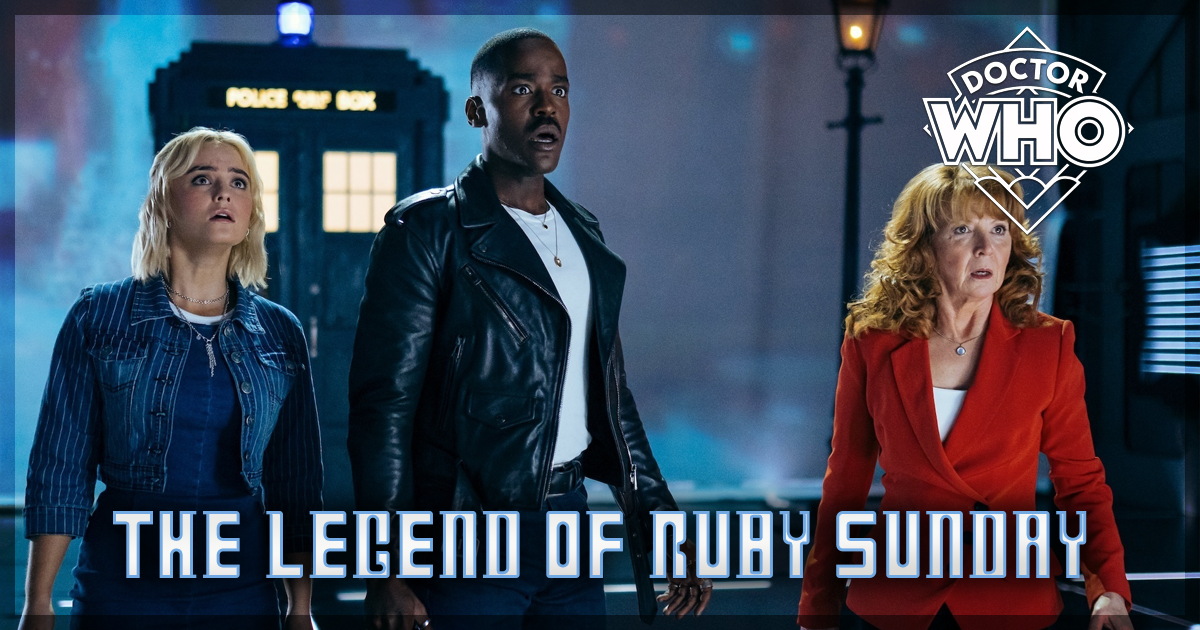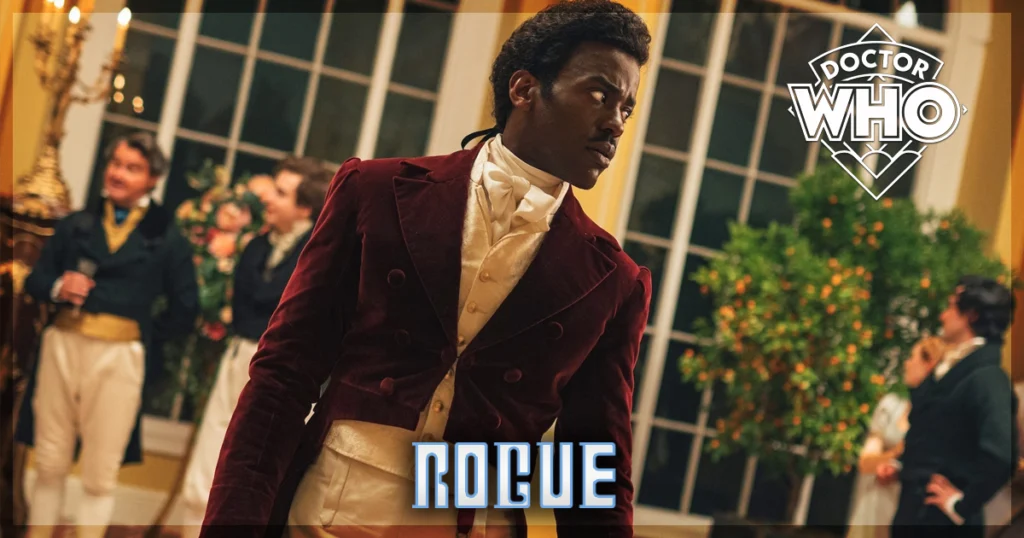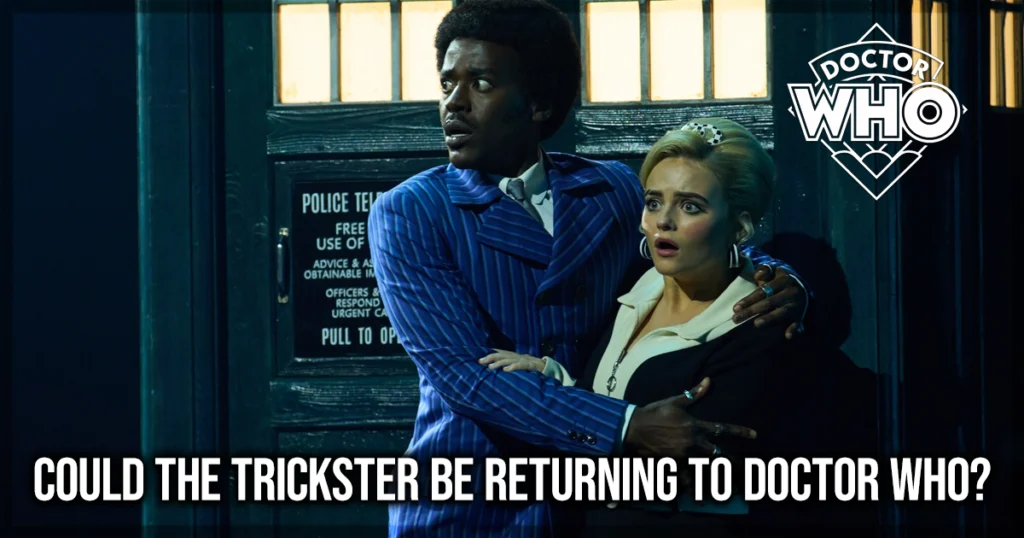Within Doctor Who, ‘two-parters’ have become commonplace, a trademark of 2005’s reboot series. Some are renowned for being fan-favorite episodes – The Empty Child/The Doctor Dances – while some are a lot less beloved; see The Pandorica Opens/Big Bang. But while some don’t hit the heights of others as a duology, the ‘Part One’ of the story always works on its own merit. Season Two of the reboot, episode Army of Ghosts, is a brilliant story that doesn’t rely on the second part to make it an engaging and full experience. That the latest episode of Doctor Who – a part one of two – The Legend of Ruby Sunday, is unsatisfying as a single episode is because the entire episode revolves around setting up for the second part, Empire of Death.
The story (so far) of The Legend of Ruby Sunday
The Legend of Ruby Sunday opens with the Doctor returning back to the headquarters of UNIT in a cold open that has a bang to it. Long gone are the dematerialization days of the TARDIS, with Gatwa’s Doctor choosing for more brash, visually exciting entrances, his cuboid spaceship whipping into the almost Avengers-esque tower, sparks flying off the ground. Disney’s money is on full display. This excitement soon fades, though, as the Doctor asks UNIT for support, both in his across-the-universe mystery woman but also with the mystery of foundling Ruby Sunday and her ability to summon snow from memory. After six episodes of cameo appearances from Susan Twist, we learn quickly from a sarcastic UNIT team that her modern-day equivalent is, in fact, Susan Triad, a tech entrepreneur about to give a mystery technology to the world.

Susan Twist, aka Susan Triad, aka Sue
We’re then given a ticking clock as it is only a few hours until Sue – as she prefers to be referred to – addresses the United Nations to deliver her technology. But the episode gets waylaid by the Ruby storyline as they attempt to revisit Ruby Road on December 24th, 2004, through UNIT’s ‘time window’, a piece of time technology that gives glances into the past. As the tension escalates to dramatic proportions – the main highlight of a wheel-spinning episode whose sole purpose is to gather momentum – the Susan Triad plot once again takes over before the series’ big bad is revealed just in time to hang a cliff bigger than Dover’s white walls.
As to why the Doctor specifically chooses now – other than it being a series finale – to return to UNIT is missing a catalyst. It’s a minimal complaint, but there was something more tangibly interesting about the finales when they had a more momentous build-up. Take the Bad Wolf era, or the Vote Saxon plot thread that gave the first part of the finale an immediate energy. The energy of The Legend of Ruby Sunday wanes so often because it switches between the Susan Triad story and the Ruby Sunday story. The episode is trying to broach all of its mysteries into one homogeneous culmination, bringing everything together for the finale. But for as many threads as it begins to unravel, so many new knots are made that the finale has almost too much to accomplish in unraveling and de-mystifying.

UNIT’s presence remains a notable high point of this new era, with their presence in this episode an uncorked bottle of charisma. Returning characters of Kate Lethbridge-Stewart (Jenna Redgrave), Mel (Bonnie Langford) and Rose Noble (Yasmin Finney) are cracking fun, while their new scientific advisor, 13-year-old genius Morris (Lenny Rush), is a splendid new face on the beat. There are too many cooks in this sci-fi broth, notably Lucy’s mother, Carla Sunday (Michelle Greenidge), who is seemingly jealous of Rose’s mother, Donna, being involved in UNIT, so a worry for next week’s episode is that they might end up standing around with notably little interaction as the stakes overwhelm their presence. Gibson’s Ruby, while the plotline of her foundling status continues to spark too little interest, is notably superb this week, hitting emotional beats as she finally feels corporeal as a character.
As for the big bad, fans of the classic series are going to lap up this return. The villain works as an intimidating presence and not solely one that exists to pander, but there is a certain personal disconnect that is felt. It’s not a complete alienation to fans who don’t have an encyclopedic knowledge of classic Who, but the reveal felt like being in a conversation where half of the participants are in on a private joke while the rest of us are forced to grin and nod in confused comprehension.
The reveal as a whole is very well handled, though, as the ever-wonderful Gatwa sells the emotional connection. The swell of Murray Gold’s score does a lot of the hard work with this tension, as the villain themself is a CGI creature, a disappointing change to a series that has prided itself on practical effects so far, with the caveat that a practical costume is also involved.
Next week’s episode, Empire of Death (which is notably the most Classic Who title of the modern era), has a lot to answer for how much of this episode is set up for it. I’m interested in seeing part two, but instead of feeling excited, I’m feeling obligated after seeing this episode. Whether that episode will smooth out this one’s rough edges enough remains to be seen, so I’m remaining cynical until proven otherwise.





